- Introduction to dystonia
- Classification of dystonia
- What causes dystonia?
- Assessment of dystonia
- Treatment of dystonia
Introduction to dystonia
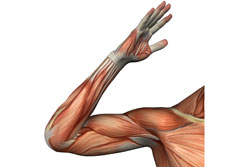
The physical limitations associated with dystonia make it a difficult condition to live with. Many people, especially women, experience depression as a result of negative body image and low self-esteem due to their functional disability. Individuals may also feel negatively about receiving a pension if they are unable to work due to their dystonia symptoms.
Classification of dystonia
Dystonia is a disorder with many different subtypes. It is classified in different people according to its cause and characteristics.
- Primary dystonia is inherited and more commonly begins during childhood. There are no neurodegenerative diseases or any other neurological symptoms besides those associated with the disorder itself. Primary dystonias are most commonly characterised by muscle twisting and repetitive movements as a result of involuntary muscle contractions;
- Secondary dystonia can be acquired through physiological events (e.g. stroke or brain damage), or certain medicines.
- Early-onset dystonia is most commonly experienced throughout the body with debilitating contractions. Often it will not begin generalised, but start in a limb or in neck muscles before spreading;
- Late-onset dystonia involves muscle contractions, most commonly exhibited locally or focally, affecting muscles of the arm (writer’s cramp), neck (cervical dystonia or torticollis) or head (spasmodic dysphonia, blepharospasm).
- Focal dystonia describes dystonia that is focused or localised to a specific part of the body;
- Multifocal dystonia is localised to two or more parts of the body that are not related;
- Segmental dystonia is localised to two or more parts of the body that are adjacent;
- Hemidystonia specifically affects the arm and leg on the same side of the body;
- Generalised dystonia describes widespread and debilitating muscle contractions affecting most or all of the body.
What causes dystonia?
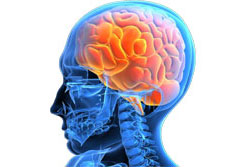
Early-onset primary dystonia is inherited. Forms of early-onset primary dystonia include the dystonia-plus syndromes such as:
- Dopa-responsive dystonia: As the name suggests, people with this form exhibit an excellent response to low-level levodopa. This syndrome usually appears early (5–6 years of age), and is predominately characterised by lower limb dystonias that get progressively worse during the day but improve after sleep;
- Myoclonus dystonia: Characteristed by rapid movements and jerks;
- Rapid-onset dystonia-Parkinsonism: Very rapid onset during childhood or early adulthood, and often associated with major stress. The symptoms may subside over time.
The cause of late-onset primary dystonia is still unknown, though it is approximately 10 times more prevalent than the early-onset form. The incidence of late-onset dystonia is increased in relatives who share the condition, and so it is believed to be genetic. It is uncertain which genes are involved.
Dystonia can be a secondary acquired symptom associated with physiological processes such as:
- Stroke;
- Perinatal anoxic injury;
- Parkinson’s disease and associated Parkinsonism disorders;
- Encephalitis;
- Head trauma;
- Pontine myelinolysis;
- Tumour;
- Multiple sclerosis;
- Cervical cord injury or lesion; and
- Complex regional pain syndrome.
Secondary acute dystonia can also be acquired through the use of certain drugs that block dopamine receptors, such as some of the older antipsychotics, or exposure to toxins (e.g. heavy metals and carbon monoxide). This can be a very frightening condition to contract. These days, dopamine-blocking agents that can cause acute dystonia are very rarely used. When they are used, the risks and side effects are thoroughly explained by the doctor before they are prescribed.
Task-specific dystonia is thought to be caused by repetitive, skilled movements such as playing an instrument or writing (writer’s cramp), but this is yet to be validated. More commonly, task-specific dystonia is associated with head trauma or unconsciousness.
Assessment of dystonia
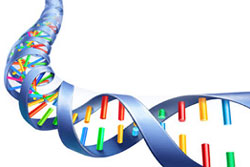
As there are many identifiable inherited genes involved in dystonia, a positive family history can be a helpful diagnostic tool, though a negative test does not rule out a genetic basis for the condition. Genetic testing can also be used for primary late onset dystonia if there is a family history of the condition.
Genetic testing can impact on people with dystonia and their families; if genetic testing is required in diagnosis, the doctor will provide genetic counselling. Genetic counselling involves explaining the testing and the genes involved in the disorder. The implications of the possible test results will be discussed with the person and their family. After all the information is provided, the family will be able to make their own informed decisions about whether to undergo the genetic tests.
It is important to remember that a negative result does not necessarily mean that the condition is not inherited. It may just mean that a different gene that has not yet been identified is involved.
Common focal dystonias such as cervical and cranial dystonias are not associated with specific gene mutations, and so molecular testing is not recommended for these conditions.
Dopa-responsive dystonia can appear clinically similar to cerebral palsy. To distinguish between the two, doctors will observe the response to a low dose of levodopa. If the condition responds very well to the treatment, it is most likely dopa-responsive dystonia. The doctor will also organise for daily monitoring. Worsening of the condition as the day progresses is also a distinguishing sign of dopa-responsive dystonia.
Rapid movements and jerks of the torso and neck are most commonly exhibited in myoclonus-dystonia.
Neuroimaging plays an important role in diagnosing dystonia by identifying certain areas of the brain that are observed to be abnormal in the image. Dystonia is associated with abnormalities in the grey matter of the brain.
In some forms of focal dystonia, such as cervical dystonia, the cerebellum is abnormal in the neuroimage. Specifically, the areas of the cerebellum responsible for associative learning are abnormal.
Dystonia exhibits abnormal circuit plasticity in the somatosensory cortex, accompanied by impairments in identifying sensory signals and planning body movements. This in turn leads to poor motor functioning.
Treatment of dystonia
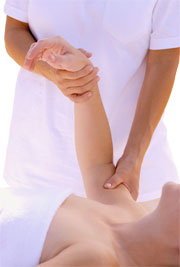
All dystonia treatment programs will involve some degree of psychotherapy, physiotherapy and physical therapy.
Oral medications are only moderately effective in treating dystonic contractions. The most effective pharmacological treatment for dystonia is intramuscular botulinum toxin (BoNT – Botox). Deep brain stimulation (DBS) has also produced positive results in dystonia treatment.
The healthcare professionals involved in the management team will encourage positive thinking throughout treatment. Specifically, they will focus on boosting body image and decreasing depression.
Physical therapy is an effective, non-invasive and inexpensive treatment for dystonia. Physical therapy will be involved in all treatment programs, and will help improve movements and posture and prevent contractures. Bracing and splinting of limbs can also lessen the severity of dystonia.
Sensorimotor retraining has shown some potential as a physical therapy for dystonia. The retraining focuses on basic tasks affected by the muscle contractions, such as finger movements for writer’s cramp. Further evidence and trials need to be conducted in this area in order to provide a clinical recommendation.
Studies have shown that physical activity is correlated with higher reports of quality of life and perceived health in people with dystonia. Therefore, a good way to manage this condition is to engage in a healthy level of physical activity.
Botulinum toxin (BoNT – Botox)
Focal dystonia is treated effectively by BoNT injections into the affected muscle. BoNT is a naturally occurring protein that exerts its clinical action by blocking acetylcholine release at the neuromuscular junction and thus relaxing the muscle.
Presently, BoNT type A (Botox, Dysport) is the first-line treatment for dystonia. It has been found to be more effective at a lesser dose when combined with physiotherapy and physical therapy.
BoNT is toxic and side effects can develop when the toxin spreads. Muscle weakness, difficulties swallowing and pneumonia (from spread of the toxin into the lungs) can result, and in rare cases fatalities can occur. It is important to seek medical attention immediately if any difficulties in speech, breathing or swallowing are experienced.
Studies of DBS targeting the globus pallidus in people with primary dystonia have provided positive results. They have reported improved motor functions and quality of life, as well as decreased need to use medications. A recent study has shown that the most benefit is seen approximately one year after the procedure, and can remain after three years.
DBS has the additional benefit of being an individualised treatment. Selection of target areas and different stimulation parameters can vary according to the symptoms experienced. The benefits of DBS can vary between people, possibly due to the complexity of the genetics or location of electrodes within the globus pallidus.
DBS is associated with a low adverse event profile when treating primary dystonia; adverse events are seen in 2–8% of people who undergo DBS. Specific adverse events seen with pallidal stimulation include speech difficulties, such as freezing of speech and worsening of voice intelligibility.
More information
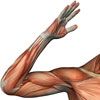 |
For more information on neurological disorders that affect movement, and their treatments, see Neurological Rehabilitation and Movement Disorders. |
References
- Schwarz CS, Bressman SB. Genetics and treatment of dystonia. Neurol Clin. 2009; 27(3): 697-718.
- Harbo HF, Finsterer J, Baets J, Van Broeckhoven C, Di Donato S, Fontaine B, et al. EFNS guidelines on the molecular diagnosis of neurogenetic disorders: General issues, Huntington’s disease, Parkinson’s disease and dystonias. Eur J Neurol. 2009; 16(7): 777-85.
- Zetterberg L, Aquilonius SM, Lindmark B. Impact of dystonia on quality of life and health in a Swedish population. Acta Neurol Scand. 2009; 119(6): 376-82.
- Vidailhet M, Grabli D, Roze E. Pathophysiology of dystonia. Curr Opin Neurol. 2009; 22(4): 406-13.
- van Harten PN, Hoek HW, Kahn RS. Acute dystonia induced by drug treatment. BMJ. 1999; 319(7210): 623-6.
- Wissel J, Ward AB, Erztgaard P, Bensmail D, Hecht MJ, Lejeune TM, et al. European consensus table on the use of botulinium toxin type in adult spasticity. J Rehabil Med. 2009; 41(1): 13-25.
- Vidailhet M, Vercueil L, Houeto JL, Krystkowiak P, Lagrange C, Yelnik J, et al. Bilateral, pallidal, deep-brain stimulation in primary generalised dystonia: A prospective 3 year follow-up study. Lancet Neurol. 2007; 6(3): 223-9.
- National Institute of Neurological Disorders and Stroke. Dystonias fact sheet [online]. USA: National Institute of Neurological Disorders and Stroke; 18 December 2009 [cited 15 January 2010]. Available from URL: http://www.ninds.nih.gov/ disorders/ dystonias/ detail_dystonias.htm
- Murase N, Kaji R, Shimazu H, Katayama-Hirota M, Ikeda A, Kohara N, et al. Abnormal premovement gating of somatosensory input in writer’s cramp. Brain. 2000; 123(Pt 9): 1813-29.
Drugs used in the treatment of dystonia:
- Botox (Botulinum toxin type A)
Diseases presenting with dystonia include:
All content and media on the HealthEngine Blog is created and published online for informational purposes only. It is not intended to be a substitute for professional medical advice and should not be relied on as health or personal advice. Always seek the guidance of your doctor or other qualified health professional with any questions you may have regarding your health or a medical condition. Never disregard the advice of a medical professional, or delay in seeking it because of something you have read on this Website. If you think you may have a medical emergency, call your doctor, go to the nearest hospital emergency department, or call the emergency services immediately.







